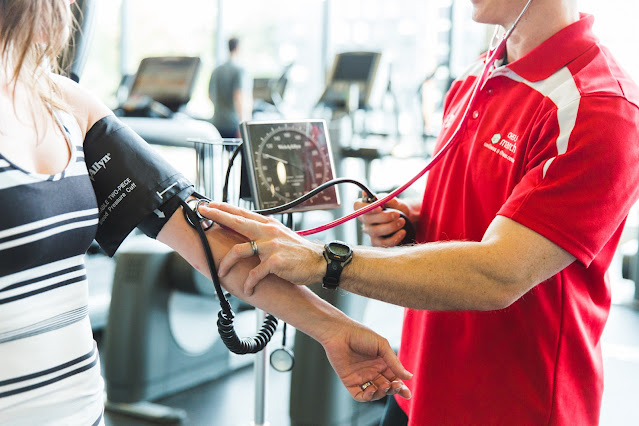What is Medical Fitness?
Medical fitness, also known as physical fitness, refers to the state of being physically healthy and capable of performing daily activities without undue fatigue. It encompasses a range of factors, including cardiovascular health, muscle strength, flexibility, and body composition. Achieving and maintaining medical fitness is essential for preventing chronic diseases, enhancing the quality of life, and increasing longevity.
Why is Medical Fitness Important?
1. Disease Prevention
One of the primary benefits of medical fitness is its role in preventing chronic diseases. Regular physical activity can reduce the risk of heart disease, stroke, diabetes, and certain types of cancer. It also helps manage existing medical conditions, such as hypertension and obesity.
2. Improved Mental Health
Physical fitness is closely linked to mental health. Exercise releases endorphins, which are natural mood lifters. Regular physical activity can reduce symptoms of depression and anxiety, improve sleep quality, and boost overall cognitive function.
3. Enhanced Quality of Life
Being medically fit allows you to engage in daily activities with ease. It enhances your endurance, strength, and flexibility, making it easier to enjoy hobbies, travel, and spend quality time with family and friends.
4. Weight Management
Maintaining a healthy weight is a crucial aspect of medical fitness. Regular exercise helps burn calories, build lean muscle mass, and increase metabolism, making it easier to achieve and sustain a healthy weight.
5. Increased Longevity
Studies consistently show that physically active individuals tend to live longer, healthier lives. Medical fitness plays a significant role in increasing life expectancy and ensuring a high quality of life in later years.
Frequently Asked Questions (FAQs)
Q1: How often should I exercise for medical fitness?
A: The American Heart Association recommends at least 150 minutes of moderate-intensity aerobic activity or 75 minutes of vigorous-intensity aerobic activity per week, combined with muscle-strengthening activities on two or more days a week.
Q2: Can I improve my medical fitness without going to a gym?
A: Absolutely! Many activities, such as brisk walking, swimming, cycling, and yoga, can help you achieve and maintain medical fitness without the need for a gym membership. If you opt to workout at home, the only investment you’ll need is a pair of dumbbells and a heart rate monitor to measure the efficiency of your heart and lungs.
Q3: Is it essential to consult a healthcare professional before starting a fitness program?
A: If you have existing medical conditions or are over the age of 40 and have been inactive, it’s advisable to consult your healthcare provider before starting a new fitness program to ensure it’s safe for you. Additionally, you can get results faster, save time and money by hiring a highly qualified fitness professional.
Q4: How long does it take to see the benefits of improved medical fitness?
A: You may start experiencing measurable benefits, like increased energy, lower resting rate, faster metabolism and improved mood, within a first 30 days. However, significant changes in cardiovascular fitness and body composition may take up to 3 months of consistent effort.
Q5: What role does nutrition play in medical fitness?
A: Nutrition is a crucial component of medical fitness. A balanced diet provides the necessary fuel for your workouts and supports overall health. A registered dietitian can help you create a personalized nutrition plan to complement your fitness goals.
Medical Fitness Testing
Check out this informative YouTube video on Medical Fitness Testing that focuses on addressing foot pronation and stability issues. In the video, the individual undergoes a comprehensive foot assessment to identify natural stance and issues with left foot pronation, which can affect activities like running, walking, and squatting. Neglecting foot exercises is a common modern lifestyle problem, but this video provides valuable insights into achieving proper foot positioning and arch support. The exercises demonstrated, starting from a hands-and-knees position and progressing to more advanced moves, are designed to strengthen and stabilize the feet. Learn about the importance of short, frequent practice sessions and the progression from a four-point to a two-point stance for enhanced stability. Don't miss out on this valuable resource to improve your foot health and overall fitness!
Image/Credit: OHSU
Conclusion:
Medical fitness is not just about looking good; it’s about feeling your best, preventing diseases, and enjoying a longer, healthier life. By incorporating regular exercise and a balanced diet into your routine, you can take significant steps toward achieving and maintaining medical fitness. Remember to consult with a healthcare professional before starting any new fitness program, especially if you have underlying medical conditions. Start today, and reap the countless benefits of a medically fit lifestyle.




![The “Dark Side” Of Ozempic [Video]](https://blogger.googleusercontent.com/img/b/R29vZ2xl/AVvXsEjkvKCAipEvfAFjw_k3s-nd3qQ6KAITkr8_9tIdwqGeH8nwdqwppXBA9g-2DSVoh6VV53s17L2nNSgODIUVHyi2Iawzf7BXvfaMkIJJuti-0U-0wtaqUlxhL61e0jxZGcBQx68UkahHRsIVa-HO1A3MwWIyo7eAbEj52wwjY2dRrAUeqzoiRw3QiWRTpNU/w72-h72-p-k-no-nu/ozempic:Jeff.jpeg)

Let's Get Social